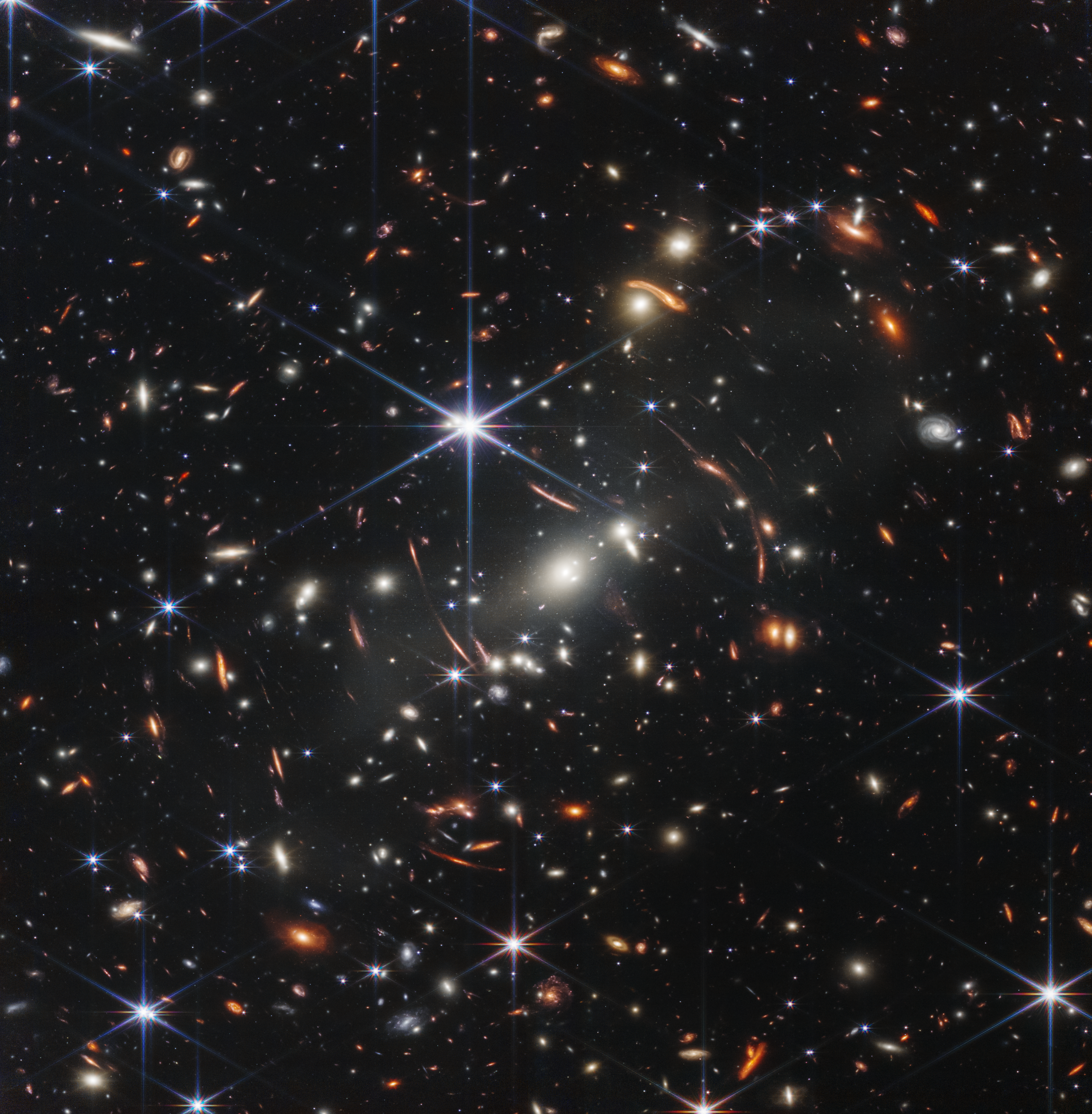James Webb: How does a grain of sand held at arm’s length look like?
The first picture taken by the James Webb Space Telescope is now known. We see a cluster of galaxies. The image is scintillating, sharp and detailed - and opens a window on the universe.
This is “an exciting moment for science and humanity”: we are finally getting to know the first images captured by the James Webb space telescope, launched on December 25th, 2021. The first image captured by the space telescope has already been released this Monday, the 11th. Scintillating, sharp and detailed, this photograph opens a window into the early universe.
“The expectation is that the James Webb will help us understand more about the formation of the universe, the cycle of the stars, the planets outside our solar system and how galaxies evolve,” explains astronomer and scientific project manager at the Portuguese Space Agency, Cláudio Melo. The astronomer also points out that thanks to the successor of the historic Hubble “we will have a notion of the scientific potential and discoveries to come.
But what does this first snapshot show us? First, thousands of galaxies located 4.6 billion light-years away. This is the “deepest and sharpest infrared technology image of the universe to date.”

© NASA, ESA, CSA, e STScI
“This image is of a galaxy cumulus, SMACS 0723. Because it is very massive, it distorts space-time and allows light from very faint objects behind the cumulus to be seen. It is the phenomenon of gravitational lensing”, explains Cláudio Melo. This happens because “the lens amplifies the light from the background objects, but as the alignment is not perfect, the image that reaches us is distorted” – and this is why we see “galaxies in the shape of arcs”.
For the astronomer, “the sharpness” and “the amount of detail” of the image, which results from “only 10 hours of observation,” is “impressive. “If you zoom in, you will see the amount of galaxies in the image, and each of them has approximately ten billion stars.” But what we see is only “a region of the sky equivalent to a grain of sand at the end of a stretched arm”: “It’s hard not to be moved by the cosmic perspective that this image gives us and not think about our planet.”
This Tuesday we will learn more images from the James Webb: the Carina nebula (“a cloud of gas and dust about 7600 light-years from Earth and harboring stars much more massive than the Sun,” as stated in Público); the end-of-life South Ring nebula; the colliding Stephan Quintet group of galaxies; and “a spectrum of WASP.96b, an exoplanet that has half the mass of Jupiter.
The James Webb is the largest and most powerful telescope ever launched into space. It is the result of a project developed by NASA, the European Space Agency (ESA) and the Canadian Space Agency.
